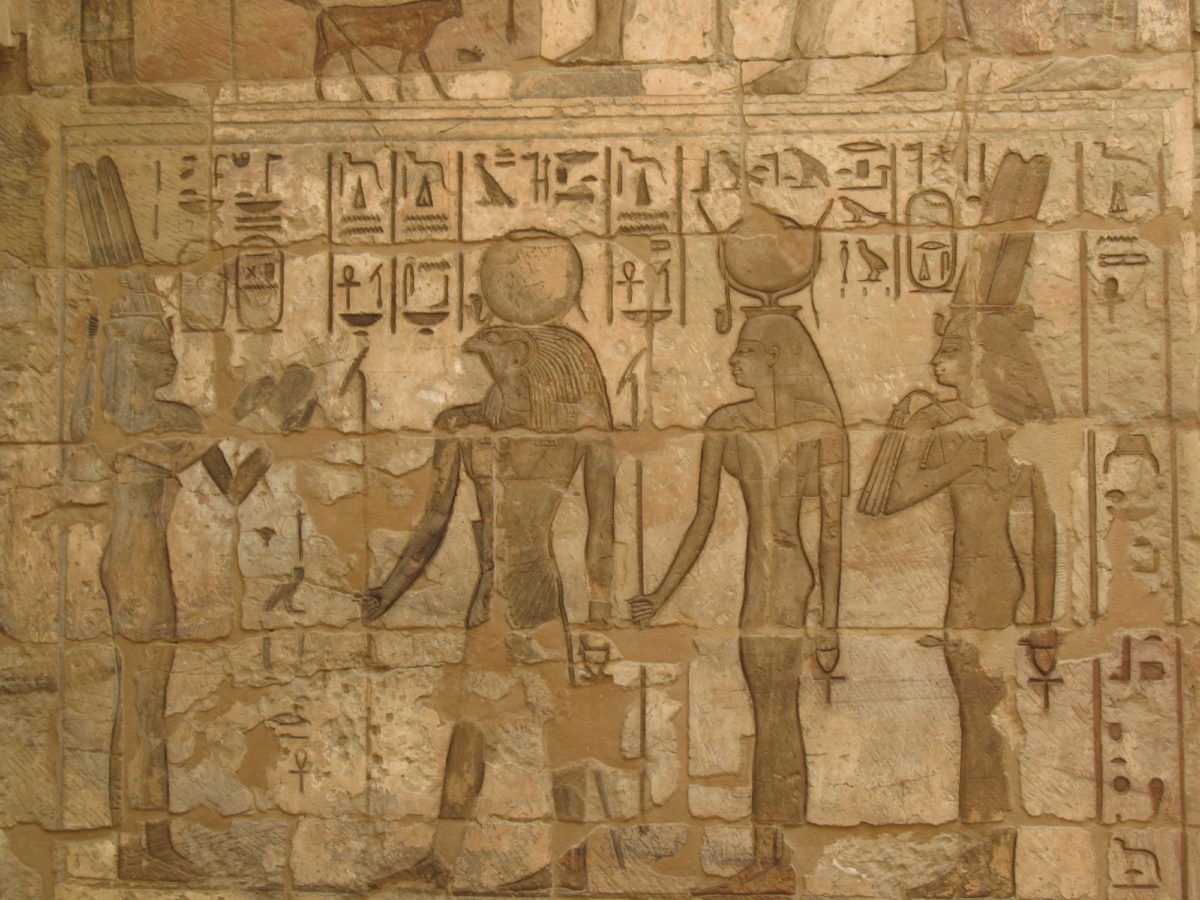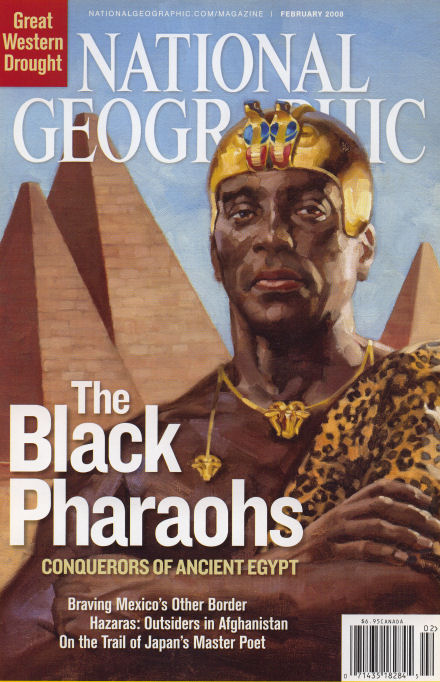Comments on the National Geographic Televised Program: “Black Pharaohs”.
A guest post by S. O. Keita
The National Geographic film feature on the 25th Dynasty deserves to be reviewed critically due to the ongoing interest in Egypt. It is important to say at the outset that it is not clear whether the producers/programmers or the academics had the most to do with final production. Nor is it clear what role PBS played in content decisions, or which outside scholars were invited to make comments before release. The ultimate responsibility in a public academic project like this belongs to both the contributors and producers. One would hope that there would have been more diversity in those involved in the production, diversity in representatives from a number of fields that have something to say about historiography—including the philosophy of science. Diversity would have been beneficial from fields that have something to say about concepts of identity as well and the flaws in reading back into the past certain kinds of attitudes and perspectives by giving ancient peoples the voices of the living. Posted here will be some initial comments about the program that will be followed at various times in the future by posts that tie various issues together. (National Geographic also published an issue of its magazine with “Black Pharaohs” as the cover story. The magazine piece has not been reviewed sufficiently by the range of anthropologists and critical scholars in various fields, and many of the comments made here would apply to that piece.)
The title from the outset is problematic. It “racializes” the identity of some ancient peoples in line with some older scholastic thinking which itself was the product of a colonialist and blatantly racist era. One famous Egyptologist spoke of the “Nigger Kings” in reference to the 25th Dynasty. The title of the program implies an absolute dichotomy between Egyptians and Nubians that even certain biased Egyptologists from the past would have questioned. Note that even Petrie, father of the Dynastic Race construct, spoke of various Egyptian dynasties other than the 25th as having Sudanese or Nubian ancestry. The issue is not whether Petrie (and others) were right or wrong, but whether or not the film’s authors/producers have ignored the variation in Egyptological opinion about what some would call the “racial” “make-up” of the Egyptians—a northern Nilotic people. We can ask what or whose concept of “race” is being used? And we can most certainly say that one notion of race has to do with the social reaction to phenotype, be it in statuary, wall paintings, or folks standing in front of you. Some populations—and families– are highly variable in the phenotypic traits that we react to so much. Egyptological opinion aside the authors did not consider the variation in anthropological and anatomical reports in anthropological studies over the last 100 years. These reports when read critically and cross-checked against each other and current understanding of variability and models of evolution are quite interesting. The producers cannot get around the fact that they have done something that ignores the data that indicates that the notion of race does not apply to modern humans. They have imposed some ideas onto the past in a particular way. When one critically examines the linguistic, archaeological and biological data from numerous sources in a form of meta-analysis, the emergence of the ancient Egyptians in northeastern Africa becomes clear.
The authors have done something else, something that is clearly problematic. They have suggested that the Egyptians saw themselves as “white” in some biocultural or political sense akin to some contemporary Europeans and Americans, and were ashamed that they had been “conquered” by “black Africans”—a term which no Egyptian or Kushite would know or have used, and which was invented by European colonialists. (And it does not matter who uses it, or that its use has persisted, even sometimes being used by those who know better.) They have psychologized the ancient Egyptian attitude as seeing all Nubians (and by extension all dark-skinned folk, including some Egyptian individuals and communities) as obligatorily separate from themselves—like certain elements in western societies today. It cannot be shown that there was a term in Egyptian that could be judged commensurate with that phrase literally or in concept. It cannot be shown, according to reputable Egyptologists, that the Egyptians described human variation in terms of color terminology. Various wall paintings that depict various peoples and color ranges in Egyptians—when these are reliable–are doing just that and should not be alleged to be presenting an Egyptian visual textbook on “race” in anticipation of being discovered by later people. The authors have imposed onto the Egyptians what is clearly a “White” Western mindset replete with a particular racialist background. They have projected a “white” mentality back into a world that had no background for the sociocultural notion of race propounded by Westerners, and did not have in their science something commensurate with the Western science that produced “races” and racialism.
History will not justify their statements, nor will the attitudes of modern Egyptians towards Nubians or Sudanese to the degree that these are negative—presentism in this context would be so ahistorical. What would the authors state as evidence for their claim of Egyptian shame? The authors might point to the “damnatio memoria”—the erasure of the 25th Dynasty or some of it being remembered via the chiseling out of names. However, the Egyptians did this to Akhenaton, other Amarna elites and Hatshepsut—who were not Kushites. The historical specifics of this are likely relatable to a certain 26th delta based king who felt bereaved against the Kushites because of how they had treated his father. Perhaps it was about legitimacy—erase the memory of the previous kings. It would be inappropriate to commit the logical error of affirming the consequent and generalize to all Egyptians. It would be illogical to suggest that the Egyptians as a nation and culture had this attitude towards all dark-skinned Egyptians and Nubians/Kushites, or had it built into their culture and laws such that they would be ashamed. The authors might also claim that the Kushites were resented due to their ascendancy in Thebes—an ascendancy that some might want to read as naked brutal conquest, for which there is no evidence. The Thebans allied themselves with the Kushites. Piankhi’s campaign of 727 BC was the put down of rebellion in the delta region some 20 years or so after his coronation as King of Upper and Lower Egypt—which clearly had Egyptian support. Is there evidence that the Kushites had no core Egyptian support because of their average darker colour? Is there evidence of guerilla warfare against the Kushite dynasty by mass numbers of Egyptians or the elites in general? Is there any evidence that the Kushites were viewed as appropriating Egyptian culture with which it shared some deep roots at some level?
The imposition of certain western identities as reified with notions of whiteness with correlated assumptions onto the ancient Egyptians can be seen in various interpretations of how the Egyptians behaved towards Nubians and others. One example is that the Egyptians colonists in Nubia withdrew from border regions after the Kushites gained ascendancy at the end of the New Kingdom. Archaeology and history clearly would seem to be best interpreted as indicating that the colony separated from Egypt and wanted to be affiliated with Kush. There was an entanglement of cultures and peoples, even as there had been in the earliest days of Egyptian origins in what David Wengrow calls the “primary pastoral community” an endogenous phenomenon that includes the Badarian predynastic culture, whose identity is rooted in an African agency, synthesis and emergence irrespective of the ultimate source of some its elements. Later developments at Hierakonpolis, Naqada and Abydos emerged from this source, as did likely the language that would be the basis of dynastic Egyptian if Satzinger is correct.
Of course none of this to say that the Egyptians never had conflicts with or attitudes about some fellow Nilotic and other neighbors—especially those deemed to be rivals, but what was its cause? Was it “racial” in all that this means in the social history of the US and the West? Was it constructed around a notion of color? Does a careful reading of various sources perhaps suggest that there were various groups of more southern Nilotics and Saharans some of whom had better relations with Egyptians.
An opportunity was lost with this particular National Geographic project, an opportunity to examine the 25th Dynasty from different levels of analysis, to see Egyptian history from different perspectives, and to examine ideas about how current notions of identity mixed up with ancestry and physical traits in the context of racism should not be imposed upon the past. There are so many more interesting things about the 25th Dynasty and the Nilotic world that could have been used to anchor the PBS offering than the title “Black Pharaohs”… From the perspective of micro-history they could have attempted to contrast a perspective of the world through the eyes of not only the 25th, but other dynasties that were foreign. For example how many of the other dynasties took on the role of revivalists to any serious degree (as did the 25th)?
In their defense maybe the authors thought they needed to say “Black Pharaohs” in order to get an audience, and maybe PBS just went along—even if this were so they could have used the piece to argue against their own title—assuming that what they seemingly conveyed is just an error.


